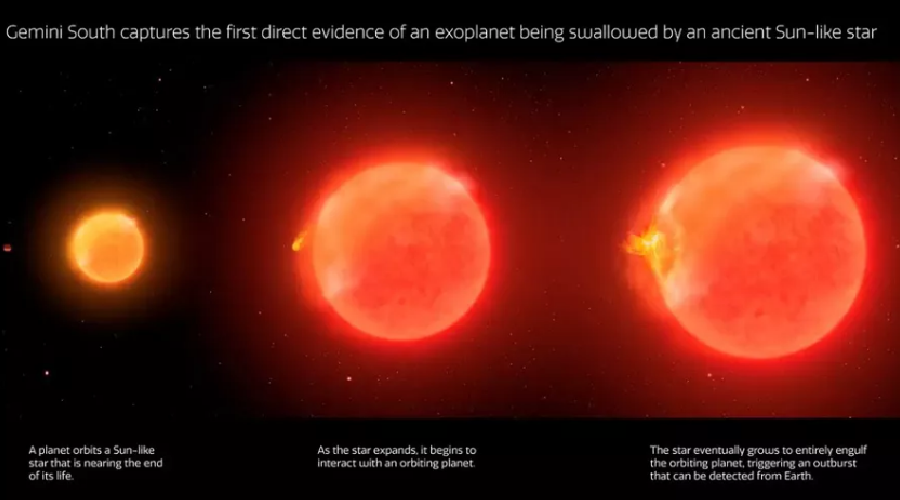Star observed eating its own planet
Scientists had the opportunity to observe the planet swallowed by its host star for the first time. The researchers raised the question, "Is such an end awaiting the Earth?"
While examining the data collected by several telescopes, astronomers made a first-of-its-kind observation. For the first time, researchers have caught a host star eating its planet. Its host star and planet were spotted near the constellation of Aquila, about 12,000 light-years away.
According to the study published in the journal Nature, the observed event occurred for 10 days in 2020, and after a bright explosion, astronomers detected a colder, longer-lasting signal for about 100 days.
According to the news of Gizmodo, lead author of the article Kishalay De, an astrophysicist from MIT (Massachusetts Institute of Technology), said, "We were seeing the final stage of swallowing," and gave information about the observation.

Image of expanding star consuming its planet
WILL THE SUN EAT THE WORLD?
According to the team's measurement, the star was 0.8 to 1.5 times the mass of our Sun, and the planet that it ate was 1 to 10 times the mass of Jupiter, the largest planet in our Solar System. In total, this event produced about 33 Earth-mass worth of hydrogen and about one-third the Earth's mass of dust.
Researchers spotted the event in data taken by the Zwicky Transient Facility (ZTF) in May 2020. According to De, one source became 100 times brighter over the course of a week, but at the same time produced molecules that only exist at cold temperatures. This meant that the source was probably not a binary system with two stars orbiting and consuming each other. "Low temperatures and twinkling stars don't go together," De said.
Additional observations at infrared wavelengths were then collected using a camera at Palomar Observatory in California, which confirmed the presence of cold material. Cold matter began gushing out of the spring within a few months.
5 BILLION YEARS
Measurements taken by the NASA telescope NEOWISE confirmed the source of the cold entity, revealing that the total energy the star has released since it shone is only 1/1000 the magnitude of previous stellar mergers. In other words, everything that combined with the star to cause it to shine was much, much smaller.
Toward the end of the meal, the researchers concluded that the outer layers of the star were exploding outward in the cold dust, thus the signal extending after the first bright event.
Documenting this event could help astronomers identify other planet-eating stars in the future. Eventually, Earth may well be consumed by the Sun as our host star expands. Fortunately, scientists estimate that the Sun will not die for about 5 billion years.
Source: Gizmodo